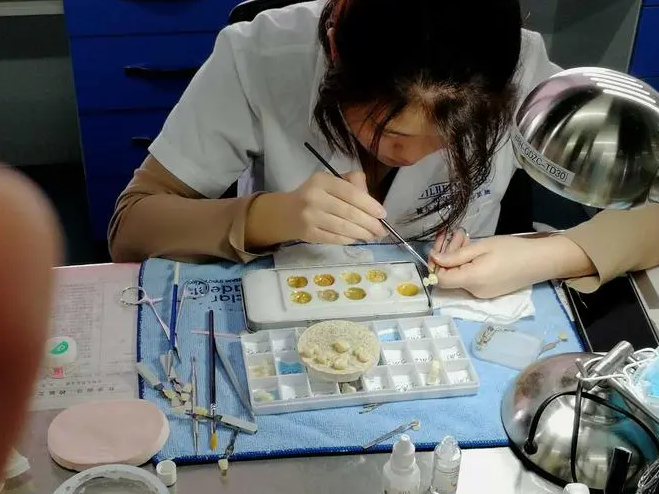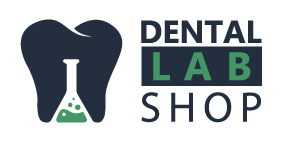Blog
The Art and Science of Dental Restorations: Navigating Material Choices in the Modern Dental Lab

The world of dental restorations has witnessed remarkable advancements with the advent of three-dimensional printing and computer-aided design and manufacturing (CAD/CAM) technology. However, traditional porcelain-fused-to-metal (PFM) restorations continue to hold their ground in modern dental laboratories. In this blog post, we will explore the unique benefits of PFM restorations, the role of dental lab technicians in blending artistry and technical expertise, and the various dental lab material options available, including dental alloy, zirconia block, porcelain powder, and glaze and paste kits.
The Enduring Appeal of PFM Restorations
PFM restorations offer unique advantages that make them a valuable option for specific cases, even in the era of CAD/CAM technology. They can provide a more natural appearance and enhanced durability, particularly in situations where the surrounding teeth are heavily stained or discolored. Complex cases with multiple components, such as bridges with multiple pontics or extensive reconstructions, may be better suited for traditional PFM restorations due to the limitations of CAD/CAM technology.
The Role of Dental Lab Technicians: Blending Artistry and Technical Expertise
Dental lab technicians play a crucial role in creating restorations that blend seamlessly with the surrounding teeth. Aesthetic considerations, such as color matching and shading, are vital in this process. A deep understanding of dental anatomy and tooth morphology is also necessary to create restorations that are both functional and visually appealing. By combining artistry and technical skill, dental lab technicians can create restorations that exceed the expectations of patients and dentists alike.
Dental Lab Material Options
- Dental Alloys: Dental alloys are used in the fabrication of PFM crowns, bridges, and other restorations. They offer strength and durability, making them suitable for back teeth restorations and patients with bruxism. Common metals used in dental alloys include gold, nickel, and chromium.
- Zirconia Blocks: Zirconia blocks are used in CAD/CAM technology to create zirconia crowns and bridges. Zirconia is a biocompatible, strong, and aesthetic material that offers a metal-free alternative to PFM restorations.
- Porcelain Powder: Porcelain powder is used in the fabrication of all-porcelain restorations, such as veneers and crowns. It offers excellent aesthetics and can be layered to create a natural-looking restoration that blends seamlessly with the surrounding teeth.
- Glaze and Paste Kits: Glaze and paste kits are used to enhance the aesthetics of dental restorations. They can be used to add translucency, adjust the color, and create a smooth, glossy surface that resembles natural tooth enamel.
Comparative Table: PFM Crowns vs. Zirconia Crowns
| Properties/Factors | Porcelain to metal (PFM) Crowns | Zirconia Crowns |
|---|---|---|
| Composition | Metal base (e.g., gold, nickel, chromium) with porcelain layer | Zirconium oxide |
| Strength & Durability | High | Very high |
| Aesthetics | Natural-looking, but metal collar may show at gum line | Highly aesthetic, translucent |
| Biocompatibility | Moderate (some patients may have metal allergies) | High |
| Wear on Opposing Teeth | Moderate to high | Low |
| Cost | Moderate | High |
Suitable Cases for Zirconia Crowns
Zirconia crowns are ideal for patients seeking highly aesthetic, metal-free restorations. Their biocompatibility and low wear on opposing teeth make them suitable for:
- Front Teeth Restorations: Zirconia crowns offer excellent aesthetics due to their translucent quality, making them a great choice for restoring front teeth.
- Patients with Metal Allergies or Sensitivities: Zirconia is a biocompatible material, reducing the risk of allergic reactions or gum irritation.
- Patients with Thin Gum Tissues: In cases where gum tissues are thin, zirconia crowns can provide a more natural appearance without the risk of a metal collar showing through.
Suitable Cases for Porcelain-Fused-to-Metal (PFM) Crowns
PFM crowns offer a balance between strength and aesthetics, making them suitable for:
- Back Teeth Restorations: The metal base in PFM crowns provides exceptional strength and durability, making them ideal for molars and premolars that experience significant biting and chewing forces.
- Patients with Bruxism: PFM crowns can withstand the excessive forces generated by teeth grinding or clenching, making them a suitable option for patients with bruxism.
- When Strength and Aesthetics are Needed: PFM crowns offer a balance between strength and aesthetics, making them a suitable choice for cases where a tooth requires significant structural support but is still visible when smiling.
- Cost Considerations: PFM crowns are generally less expensive than zirconia crowns, making them a more viable option for patients with financial constraints.
- Patients with Receding Gums: The metal collar of PFM crowns can help protect the tooth structure in cases where gum recession is expected or already present.
Conclusion
The dental laboratory plays a pivotal role in the creation of high-quality dental restorations, and dental technicians are at the heart of this process. These skilled professionals must navigate a wide array of dental lab supplies options, including dental alloys, zirconia blocks, porcelain powder, and glaze and paste kits, to create restorations that meet the unique needs of each patient. By blending their artistic talents with technical expertise, dental technicians can ensure that restorations are both functional and aesthetically pleasing. As advancements in technology and materials continue to shape the field of dental restorations, the dental laboratory and its technicians will remain essential in delivering the best possible outcomes for patients.
